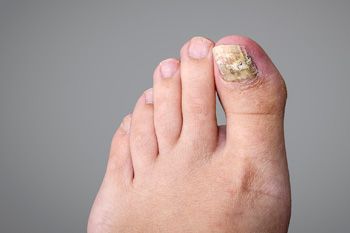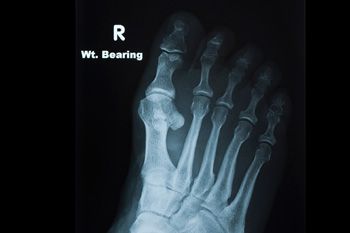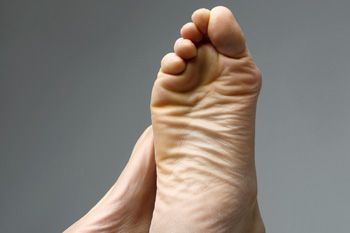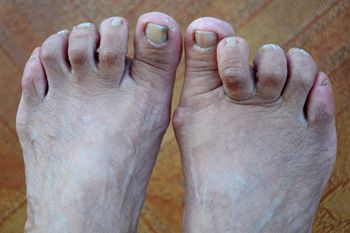What is a Fungal Nail?
Description and Tips
Onychomycosis is an infection of the bed and plate underlying the surface of the nail, and is caused by various types of fungi, which are commonly found throughout the environment. Fungi are simple parasitic plant organisms, such as molds and mildew, that lack chlorophyll and therefore do not require sunlight for growth. A group of fungi called dermatophytes easily attack the nail, thriving off keratin, the nail's protein substance.
When the tiny organisms take hold, the nail may become thicker, yellowish-brown or darker in color, and foul smelling. Debris may collect beneath the nail plate, white marks frequently appear on the nail plate, and the infection is capable of spreading to other toenails, the skin, or even the fingernails.
Because it is difficult to avoid contact with microscopic organisms like fungi, the toenails are especially vulnerable around damp areas where people are likely to be walking barefoot--swimming pools, locker rooms, and showers, for example. Injury to the nail bed may make it more susceptible to all types of infection, including fungal infection. Those who suffer chronic diseases, such as diabetes, circulatory problems, or immune-deficiency conditions, are especially prone to fungal nails. Other contributory factors may be a history of athlete's foot and excessive perspiration.







